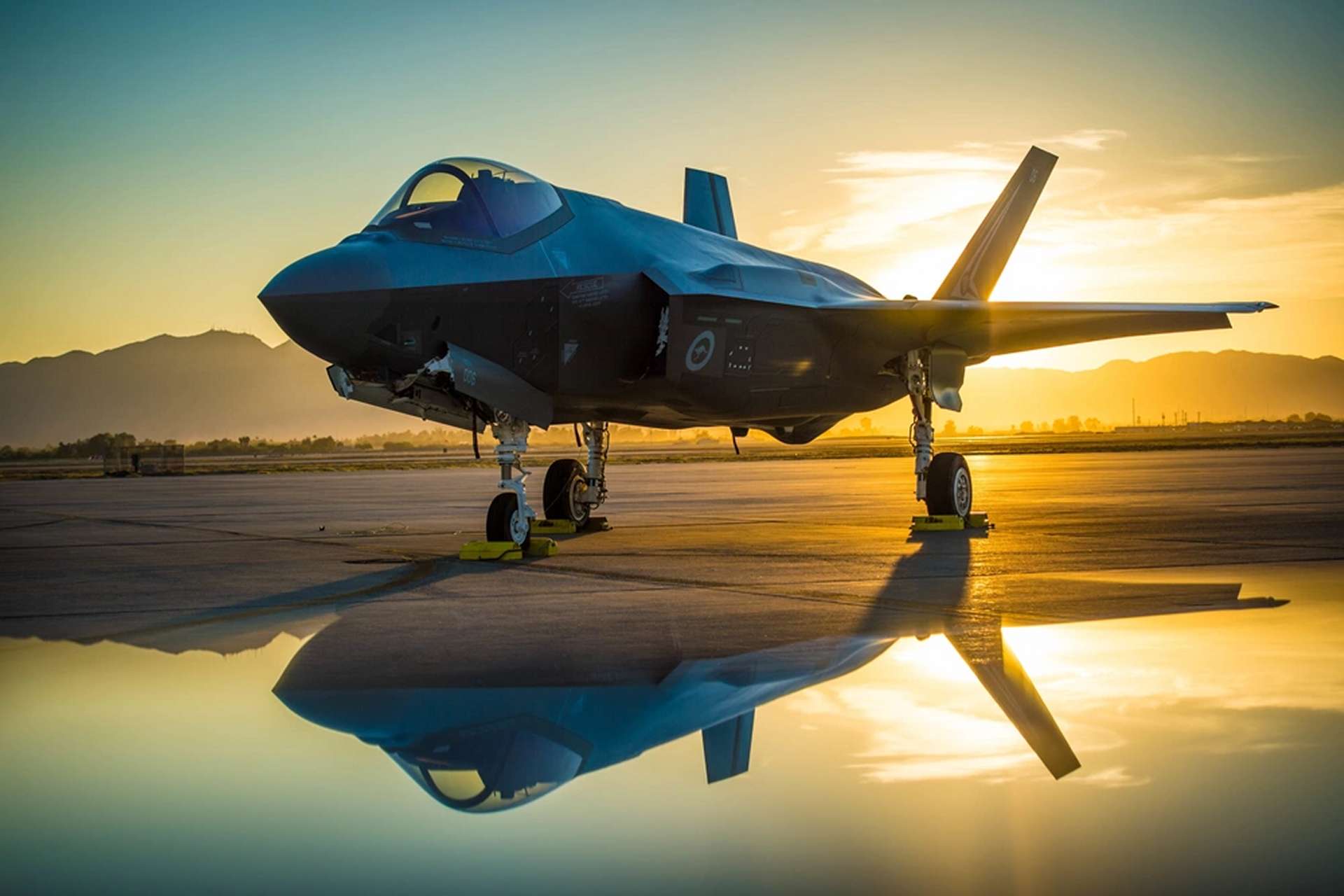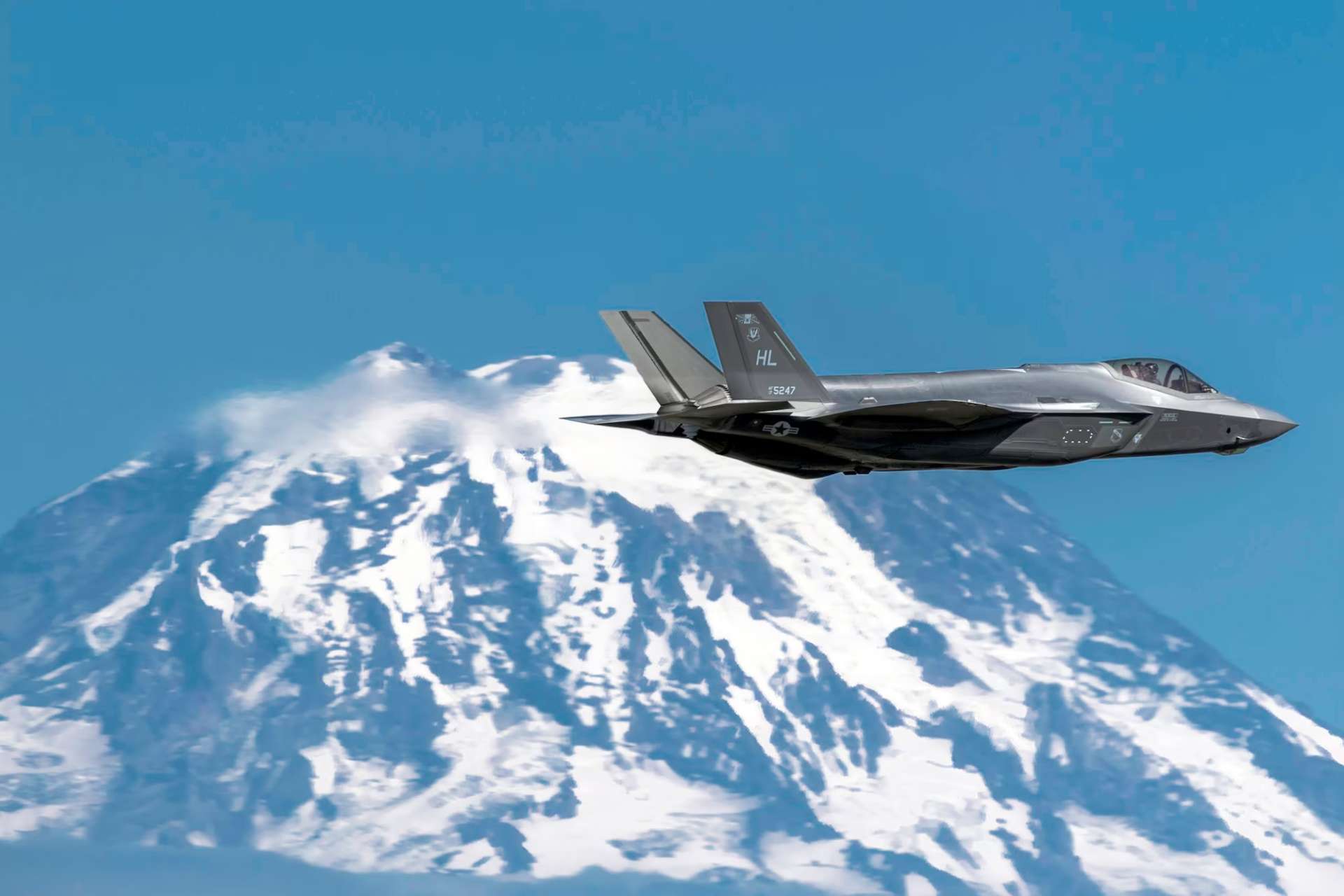Lockheed Martin Delivers 1 000th F-35 Lightning II Multirole Fighter Jet

{loadposition bannertop}
{loadposition sidebarpub}
Lockheed Martin has reached a symbolic milestone with the delivery of its 1,000th F-35 Lightning II fighter jet. This achievement underscores the aircraft’s status as the most widely produced fifth-generation fighter jet in the world, surpassing the combined totals of all other fifth-generation jets. Frank A. St. John, COO of Lockheed Martin, stated in an interview with CNBC that Lockheed has been able to deliver the 1,000th fighter jet.Follow Army Recognition on Google News at this link
Lockheed Martin has reached a symbolic milestone with the delivery of its 1,000th F-35 Lightning II fighter jet. (Picture source: US DoD)
The F-35 program continues to attract global interest, with numerous international orders complementing the substantial demand from the United States Department of Defense (DoD). The United States remains the largest customer, with orders covering all three variants of the F-35: the F-35A for the Air Force, the F-35B for the Marine Corps, and the F-35C for the Navy. The Air Force alone is expected to acquire more than 1,700 F-35As.
Despite this significant delivery, the F-35 program faces challenges. The Technology Refresh 3 (TR-3) initiative, crucial for enhancing the aircraft’s capabilities, has encountered significant delays. These setbacks have resulted in a backlog of approximately 100 fighter jets at Lockheed Martin’s facilities. However, to meet operational needs, the Pentagon has resumed accepting F-35 deliveries, despite ongoing issues with the TR-3. Denmark, among other countries, has also taken delivery of these jets.
Frank A. St. John, Lockheed Martin’s Director of Operations, emphasized the company’s commitment to overcoming these obstacles. Speaking at the Farnborough International Airshow, St. John expressed pride in this achievement and highlighted the continuous efforts to meet delivery targets. Lockheed Martin plans to deliver between 75 and 110 F-35s in 2024.
Lieutenant General Mike Schmidt of the F-35 Joint Program Office (JPO) outlined a phased approach for TR-3 deliveries. Initial jets with basic training capabilities are expected by July and August, with full TR-3 combat capabilities anticipated by 2025.
The F-35 Lightning II, developed by Lockheed Martin, is a multi-role fighter jet designed to replace several aging aircraft in the U.S. armed forces and their allies. Known as the Joint Strike Fighter (JSF), this aircraft comes in three variants: the F-35A for the Air Force, the F-35B for the Marine Corps, and the F-35C for the Navy.
The F-35A, which made its first flight in June 2008, entered service in 2015. The F-35B followed in 2016, while the F-35C was introduced in 2019. This aircraft represents a colossal investment of $406.5 billion in 2016, with total projected costs exceeding $1 trillion. In terms of unit costs, the F-35A initially cost around $182 million in 2014, while the F-35B and F-35C cost $252 million and $299 million, respectively. These costs have decreased over production lots, with the F-35A projected to cost $77.9 million for the 14th lot.
The F-35 is powered by a Pratt & Whitney F135 turbofan engine, capable of delivering 178 kN of thrust. The aircraft features varying dimensions based on its variants: a wingspan of 10.40 meters for the F-35A and F-35B, and 13.10 meters for the F-35C, with a standard length of 15.85 meters and a height of 5.28 meters for all models. The wing area of the F-35C is 57.6 m², larger than that of the F-35A and F-35B, which is 42.7 m².
In terms of performance, the F-35 can reach a maximum speed of 1,700 km/h (Mach 1.6+) at cruising altitude, with a ceiling of 18,500 meters. Its range varies by version: 1,080 km for the F-35A, 869 km for the F-35B, and 1,138 km for the F-35C. Its endurance exceeds 2,800 km, and the thrust-to-weight ratio is greater than 1. The F-35A can withstand loads of up to +9 G, while the F-35B and F-35C can handle up to +7 G.
In terms of armament, the F-35 is equipped with a GAU-22 25mm cannon with 180 rounds (housed in an external pod on the F-35B). It also has two internal bays, each with two pylons, capable of holding up to 2,800 kg of weapons. The external pylons can carry an additional 6,800 kg on six hardpoints. The F-35’s advanced avionics include an AN/APG-81 radar and AN/AAQ-37 infrared sensors, providing cutting-edge detection and combat capabilities.
In summary, the F-35 Lightning II stands out for its versatility, advanced stealth and detection capabilities, and its ability to perform a variety of missions, from air superiority to ground strikes, reconnaissance operations, and electronic warfare.
The delivery of the 1,000th F-35 is a testament to the aircraft’s critical role in modern air combat. The F-35’s dominance is reflected not only in its production numbers but also in its widespread adoption by U.S. allies and partners. This includes recent orders from countries like Israel, Germany, and Greece, ensuring that the F-35 will remain a cornerstone of global air defense for years to come.
As legislative debates continue in Washington regarding the future procurement of F-35s, the delivery of the 1,000th jet marks a milestone in the program’s history, reflecting both its achievements and the challenges ahead.
The Lockheed Martin F-35 Lightning II. ( Picture Source: US DoD)

{loadposition bannertop}
{loadposition sidebarpub}
Lockheed Martin has reached a symbolic milestone with the delivery of its 1,000th F-35 Lightning II fighter jet. This achievement underscores the aircraft’s status as the most widely produced fifth-generation fighter jet in the world, surpassing the combined totals of all other fifth-generation jets. Frank A. St. John, COO of Lockheed Martin, stated in an interview with CNBC that Lockheed has been able to deliver the 1,000th fighter jet.
Follow Army Recognition on Google News at this link
Lockheed Martin has reached a symbolic milestone with the delivery of its 1,000th F-35 Lightning II fighter jet. (Picture source: US DoD)
The F-35 program continues to attract global interest, with numerous international orders complementing the substantial demand from the United States Department of Defense (DoD). The United States remains the largest customer, with orders covering all three variants of the F-35: the F-35A for the Air Force, the F-35B for the Marine Corps, and the F-35C for the Navy. The Air Force alone is expected to acquire more than 1,700 F-35As.
Despite this significant delivery, the F-35 program faces challenges. The Technology Refresh 3 (TR-3) initiative, crucial for enhancing the aircraft’s capabilities, has encountered significant delays. These setbacks have resulted in a backlog of approximately 100 fighter jets at Lockheed Martin’s facilities. However, to meet operational needs, the Pentagon has resumed accepting F-35 deliveries, despite ongoing issues with the TR-3. Denmark, among other countries, has also taken delivery of these jets.
Frank A. St. John, Lockheed Martin’s Director of Operations, emphasized the company’s commitment to overcoming these obstacles. Speaking at the Farnborough International Airshow, St. John expressed pride in this achievement and highlighted the continuous efforts to meet delivery targets. Lockheed Martin plans to deliver between 75 and 110 F-35s in 2024.
Lieutenant General Mike Schmidt of the F-35 Joint Program Office (JPO) outlined a phased approach for TR-3 deliveries. Initial jets with basic training capabilities are expected by July and August, with full TR-3 combat capabilities anticipated by 2025.
The F-35 Lightning II, developed by Lockheed Martin, is a multi-role fighter jet designed to replace several aging aircraft in the U.S. armed forces and their allies. Known as the Joint Strike Fighter (JSF), this aircraft comes in three variants: the F-35A for the Air Force, the F-35B for the Marine Corps, and the F-35C for the Navy.
The F-35A, which made its first flight in June 2008, entered service in 2015. The F-35B followed in 2016, while the F-35C was introduced in 2019. This aircraft represents a colossal investment of $406.5 billion in 2016, with total projected costs exceeding $1 trillion. In terms of unit costs, the F-35A initially cost around $182 million in 2014, while the F-35B and F-35C cost $252 million and $299 million, respectively. These costs have decreased over production lots, with the F-35A projected to cost $77.9 million for the 14th lot.
The F-35 is powered by a Pratt & Whitney F135 turbofan engine, capable of delivering 178 kN of thrust. The aircraft features varying dimensions based on its variants: a wingspan of 10.40 meters for the F-35A and F-35B, and 13.10 meters for the F-35C, with a standard length of 15.85 meters and a height of 5.28 meters for all models. The wing area of the F-35C is 57.6 m², larger than that of the F-35A and F-35B, which is 42.7 m².
In terms of performance, the F-35 can reach a maximum speed of 1,700 km/h (Mach 1.6+) at cruising altitude, with a ceiling of 18,500 meters. Its range varies by version: 1,080 km for the F-35A, 869 km for the F-35B, and 1,138 km for the F-35C. Its endurance exceeds 2,800 km, and the thrust-to-weight ratio is greater than 1. The F-35A can withstand loads of up to +9 G, while the F-35B and F-35C can handle up to +7 G.
In terms of armament, the F-35 is equipped with a GAU-22 25mm cannon with 180 rounds (housed in an external pod on the F-35B). It also has two internal bays, each with two pylons, capable of holding up to 2,800 kg of weapons. The external pylons can carry an additional 6,800 kg on six hardpoints. The F-35’s advanced avionics include an AN/APG-81 radar and AN/AAQ-37 infrared sensors, providing cutting-edge detection and combat capabilities.
In summary, the F-35 Lightning II stands out for its versatility, advanced stealth and detection capabilities, and its ability to perform a variety of missions, from air superiority to ground strikes, reconnaissance operations, and electronic warfare.
The delivery of the 1,000th F-35 is a testament to the aircraft’s critical role in modern air combat. The F-35’s dominance is reflected not only in its production numbers but also in its widespread adoption by U.S. allies and partners. This includes recent orders from countries like Israel, Germany, and Greece, ensuring that the F-35 will remain a cornerstone of global air defense for years to come.
As legislative debates continue in Washington regarding the future procurement of F-35s, the delivery of the 1,000th jet marks a milestone in the program’s history, reflecting both its achievements and the challenges ahead.

The Lockheed Martin F-35 Lightning II. ( Picture Source: US DoD)





